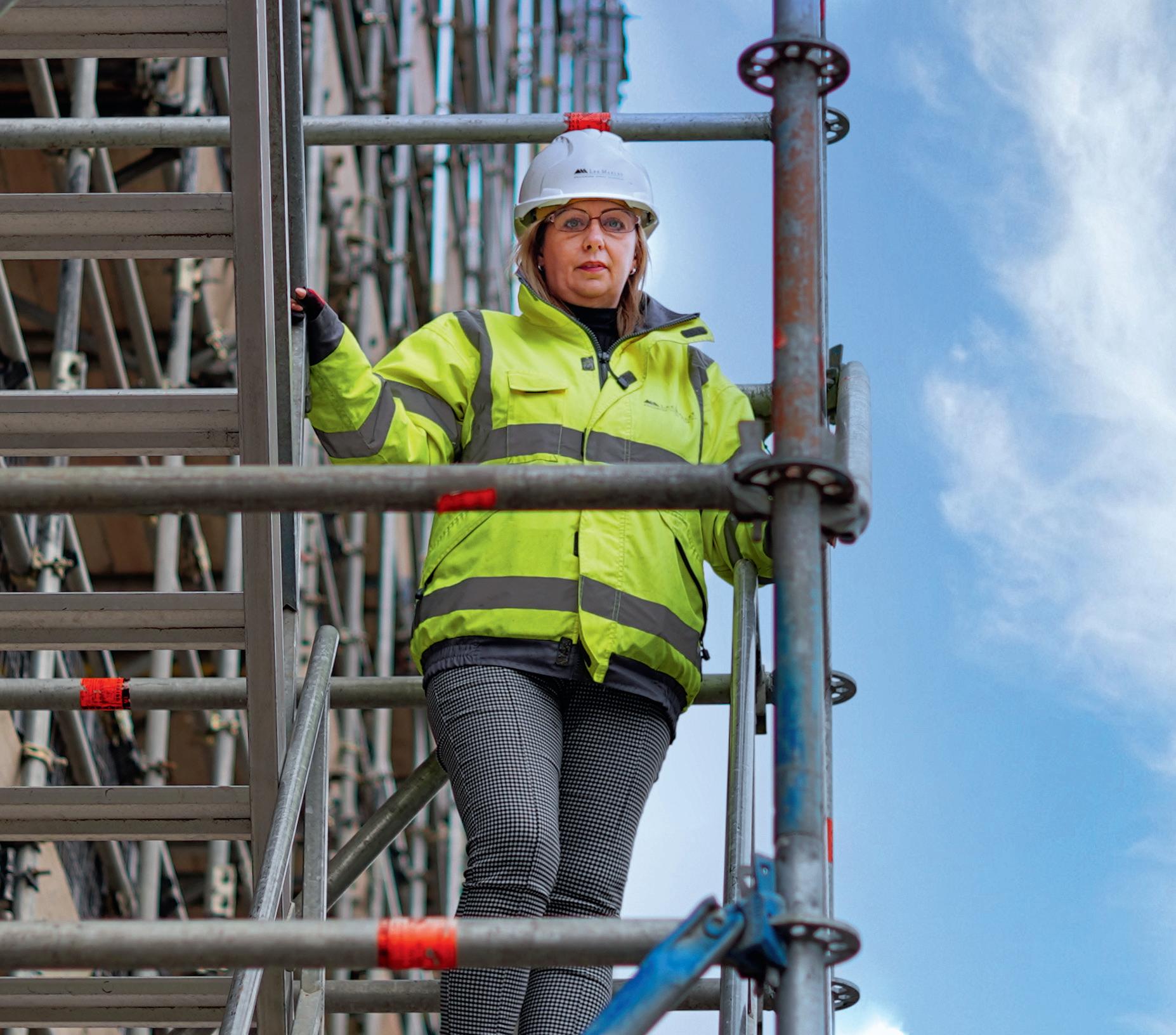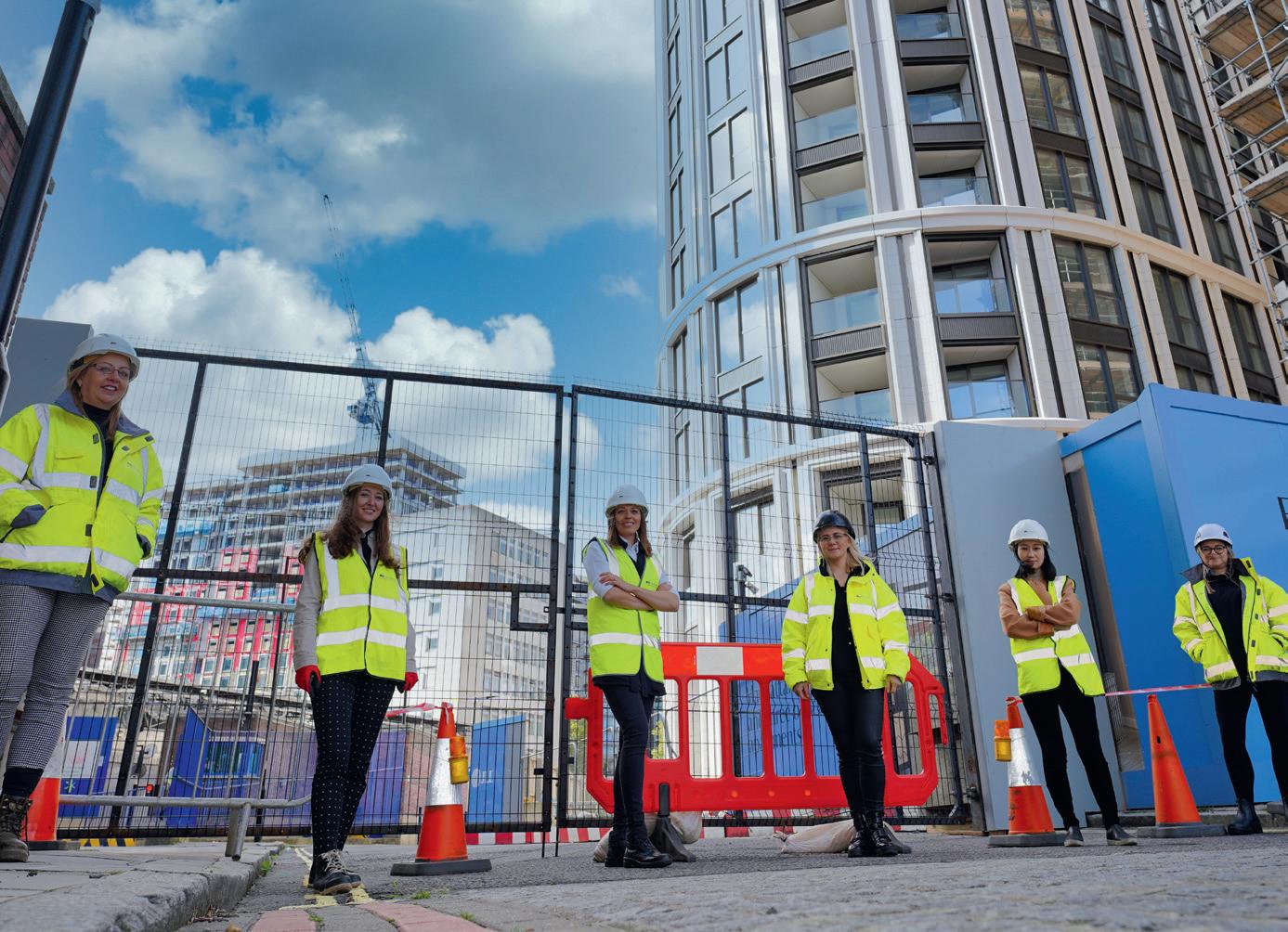
5 minute read
Back to school
from Scaffmag Issue 11
by ScaffMag
Education is key to unlocking inclusion so construction must aim for schools, not just skylines, when it comes to plugging the gender gap
It’s not without good reason that alarm bells rang in the construction industry two years ago.
Advertisement
A pre-pandemic world defined by a listless obsession with brakes-off development might sound like a glory age for the sector, but the findings of a 2018 ONS review of the UK workforce painted a less positive picture. Despite efforts to address the imbalance, the report found women were so poorly represented in certain construction occupations – including bricklaying, scaffolding and roofing – the actual numbers were too low to measure accurately.
Potential causes of the imbalance range from health and safety concerns to inflexible working structures, but in reality old public image, stereotypes and sexism also factor in the explanation. Crucially, the news hit two years after a separate report, Modernise Or Die, looking at the UK construction workforce as a whole. It warned an extra 120,000 employees would be needed within the industry to meet rising demand for skilled trades in the coming years, with 700,000 workers also due to retire in that time. The point being, by addressing construction’s shameful gender inequality we will also help plug that gaping hole.
“I would have to say although it has improved over the 15-plus years that I have worked in the industry, it still has a long way to go,” says Tanya Hilton, scaffolding survey manager at Lee Marley Brickwork Ltd, when we ask about how much has been done to encourage more women into the industry during her career.
“Currently I work across nine different sites and the presence of women on site is more prevalent in the offices. However, actually on site it still appears to be lacking and this is clear by how you are looked at, almost as though it is still a massive surprise to see a woman walking around site.” A key problem, according to Hilton, isn’t so much the reality but the image and perceptions of construction work.
“There is still plenty of work to be done to improve understanding of the career options available within the construction industry,” she explains.
“We need to get the message across that a career in construction does not mean that you have to work on site only, and eliminate one of the main misconceptions — that this is an intimidating environment for women. In my experience that’s not the case at all.” “For me it needs to start at school level. Teaching from a young age about the diverse opportunities within construction, and the many options for career progression,” Hilton continues.
“This would open up an understanding and trigger consideration for this type of career much earlier, rather than, for example, in my case, where I luckily found this career by chance through another job I was doing, and had no idea a career in this field was even an option while at school.” Hilton isn’t alone. Another senior member of the Lee Marley Brickwork Ltd team, Sylvia Wheatcroft, echoes similar concerns. Having worked in the industry for 13 years, rising to logistics manager, she believes progress has been made but women still find themselves in back office roles, rather than on site.
“At Lee Marley Brickwork we do have a small team of women such as apprentice bricklayers, health and safety managers and surveyors who are working on our sites on a daily basis,” she says.

ABOVE: Logistics Manager Sylvia Wheatcroft at Lee Marley Brickwork Ltd. LEFT: Scaffolding Surveying Manager Tanya Hamilton also at Lee Marley Brickwork Ltd.

“But, like many sectors, while this has made fundamental changes, more can be done to encourage and develop more diversity in all departments.” Again, the crux of the problem lies in a lack of awareness among young women about potential careers within construction. And the solution involves reaching people at school age to open their eyes to opportunities.
“I think there is still a requirement to encourage more diversity in the workforce and to raise awareness of what the industry can offer. Perhaps more funding, investment and support for start-up companies with diversity as a focus would help change perceptions that construction is predominantly male,” she says. “I think raising the awareness from a school or college age would help, along with promoting apprenticeships. Companies who canshould publish diversity reports and policies, and committing to improving may attract applicants,” Wheatcroft continues, before explaining her views are formed from first-hand experience.
“I never envisaged working in construction. I would have never known the opportunities if I did not apply for my initial administrator role, 13 years ago, but I can confidently recommended the industry to anyone.” Hilton and Wheatcroft see eye-to-eye on the gender imbalance in the construction workforce,

and the possible ways to improve that situation. The pair also share the same opinion on the emerging skills gap. And, as Whatcroft explains, this also comes down to educating people on the different careers available. “I would not say there is a current skill gap in the industry as such, but a lack of awareness of what opportunities, training and career paths are available within construction, and how working in construction does not mean every individual is physically on site laying bricks or erecting scaffolding. I feel this message could be made clearer from a school or college age,” she says. “I think that if there are currently skills shortages across the board in construction, again this comes down to the complete misconception of what a career in construction means,” agrees Hilton.
“A lack of education of what is available and the opportunities at school and college level is where the industry is falling short in obtaining new and talented young people who want to work in construction.” In many ways this should be taken as a positive – clearly major steps have been made to build a world where the industry as a whole wants, and needs, more female employees.
Nevertheless, it should also be taken as a telling sign that failure to invest in and connect with tomorrow’s workforce is only ever going to come back to bite us tenfold. Compelling evidence that an industry’s survival relies on its ability to nurture, not just function.








